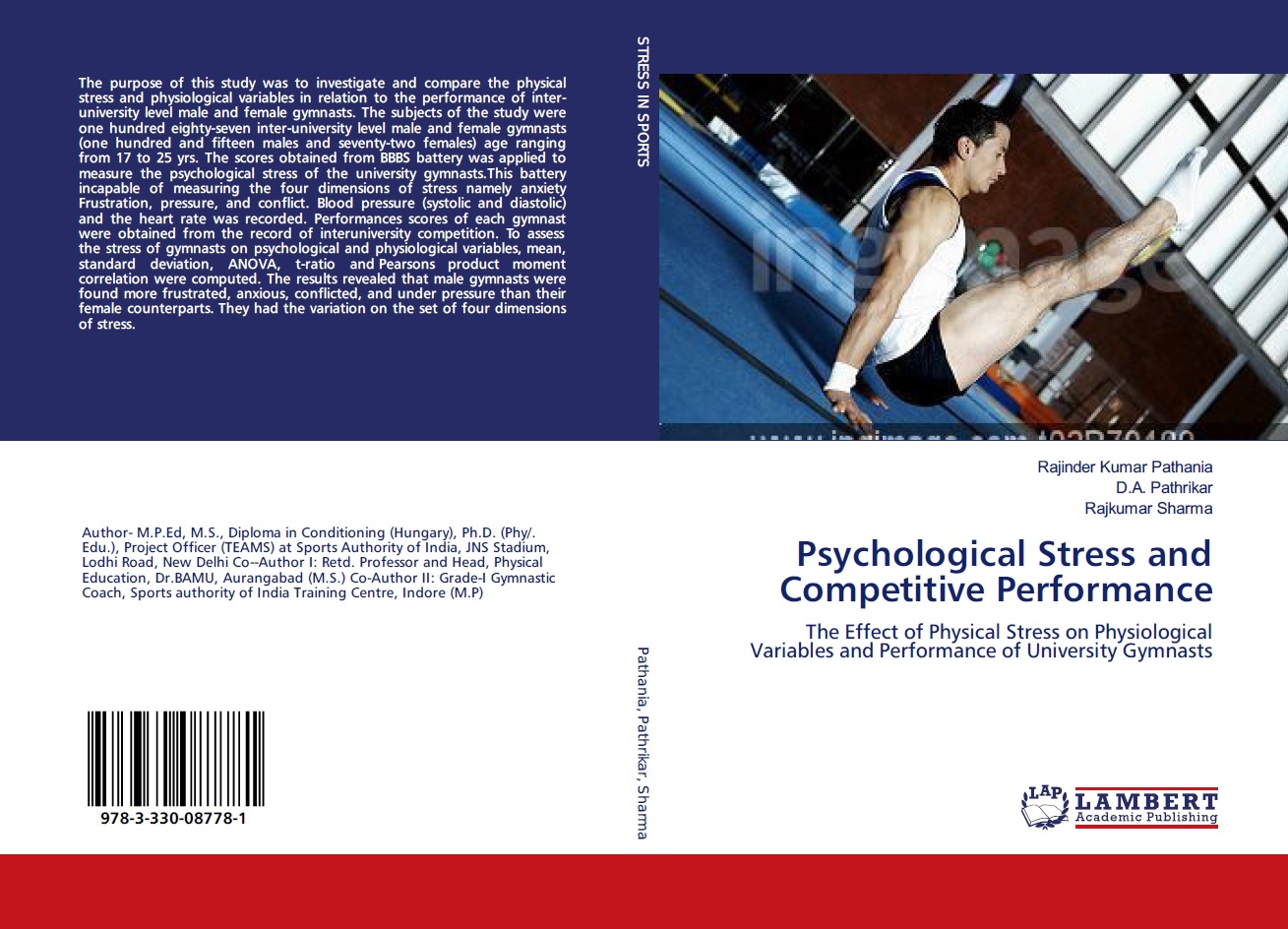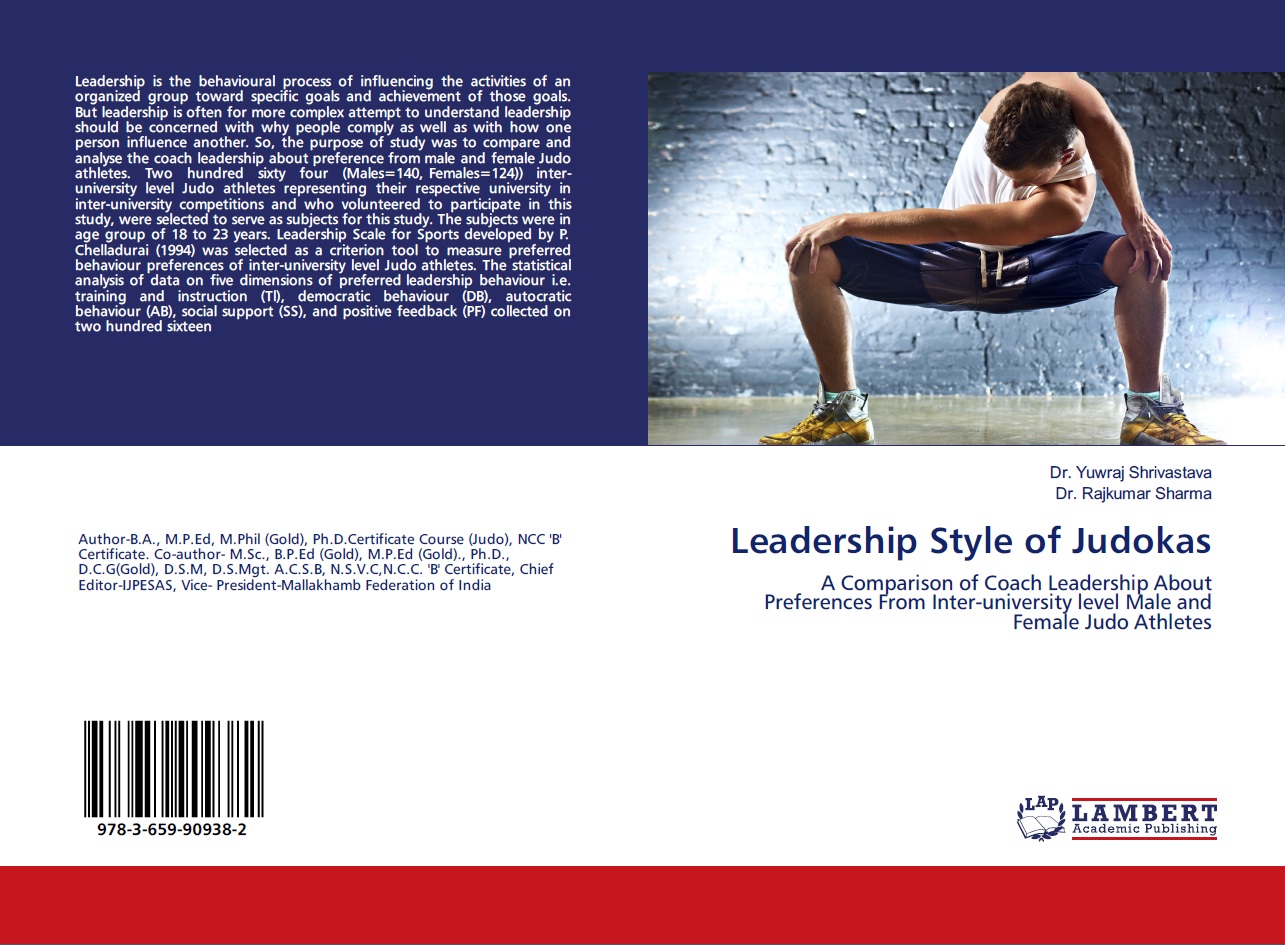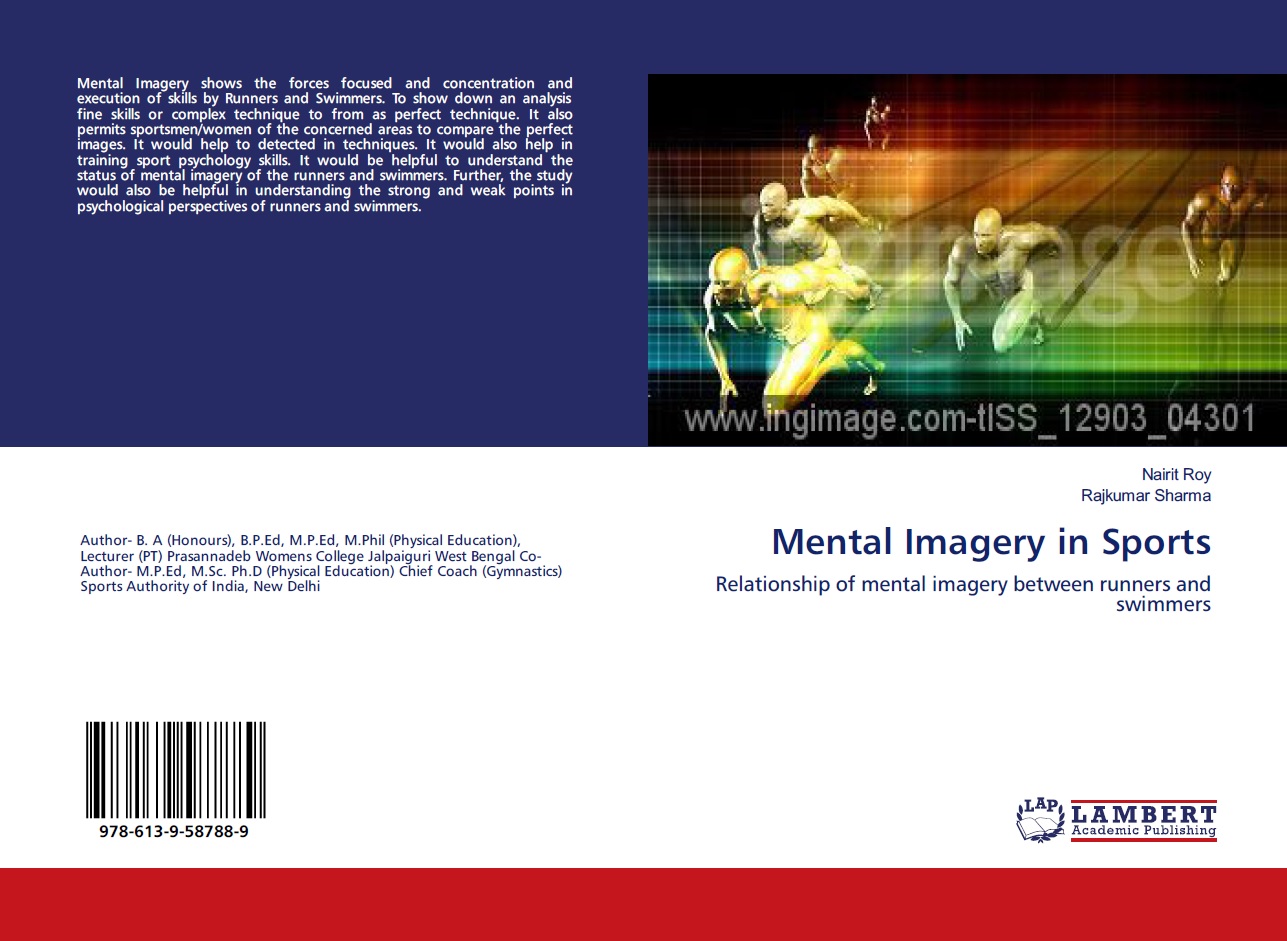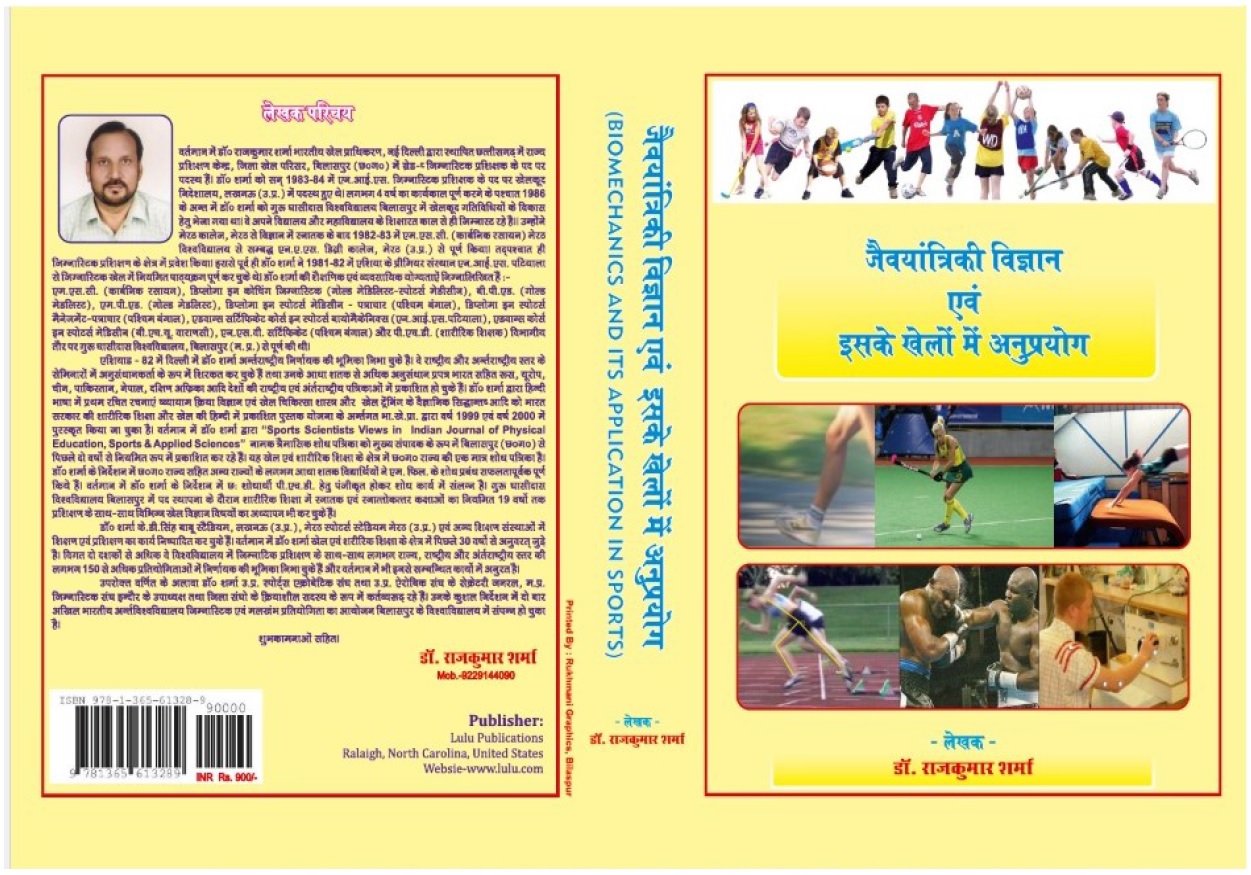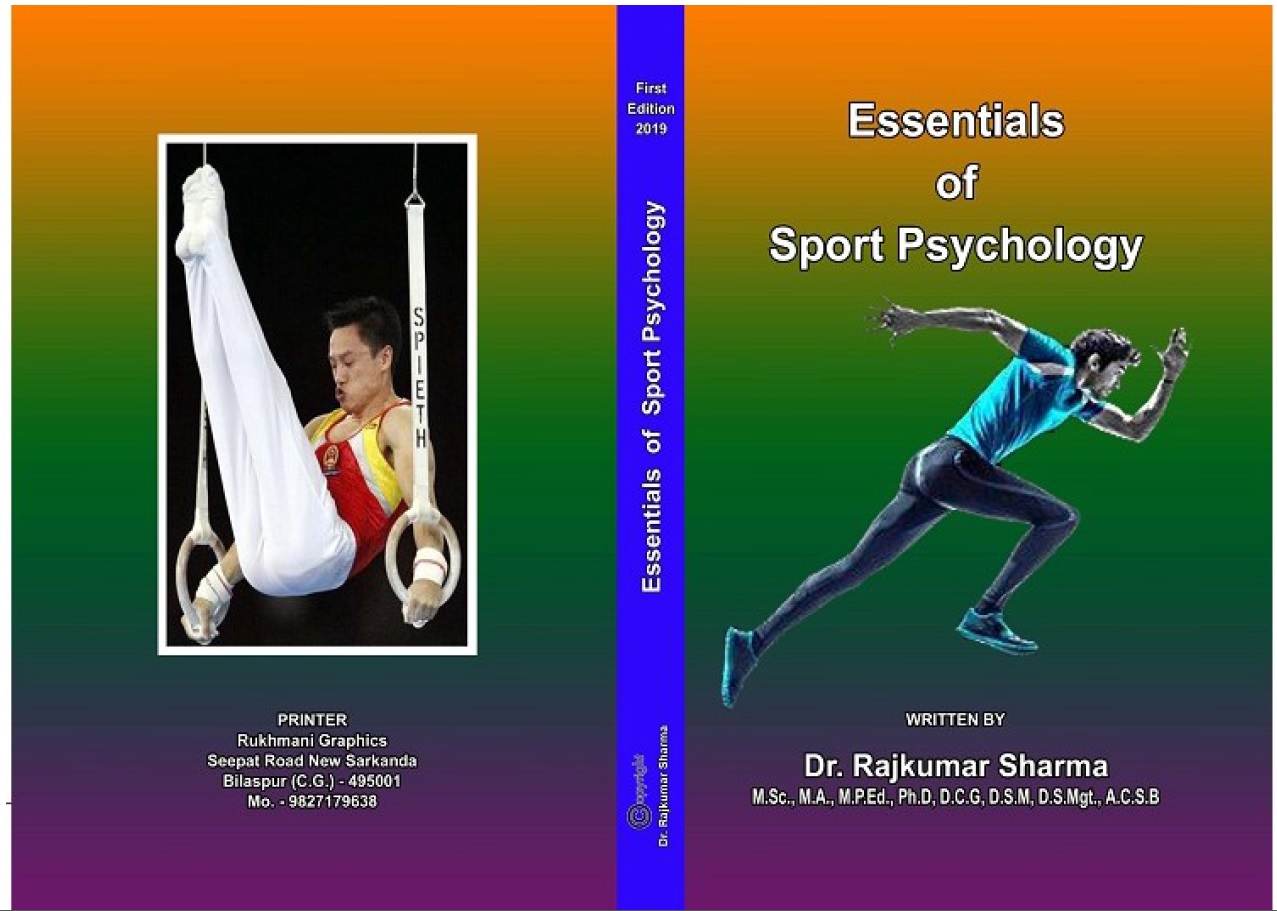| S.No. | Total View Count | Title of Manuscript | Page No | Download/ PDF |
|---|---|---|---|---|
| 1 | COMPARATIVE EVALUATION OF SUPERSTITIOUS BEHAVIOUR AMONG COLLEGIATE MALE STUDENTS BASED ON PARTICIPATION IN COMPETITIVE SPORTS Author: Sulekha Raut1 and Dr. Jai Shankar Yadav2 | 92-97 |  7 7 |
Article info
https://doi.org/10.17605/OSF.IO/GXZP9
doi no.: 05-2016-44975451, DOI Link :: https://doi-ds.org/doilink/06.2021-95364582/IJPESAS/V11/I2/A15
AFFILIATIONS:
- Research Scholar, Department of Physical Education, Dr. CV Raman University, Kargi Road Kota Bilaspur C.G.
- Associate Professor, Department of Physical Education, Dr. CV Raman University, Kargi Road Kota Bilaspur C.G.
The present study aimed to compare superstitious behaviour between sportspersons and non-sportsperson students enrolled in UG and PG program in colleges. The researcher decided to select 100 male intercollegiate sportspersons for this study. It was also decided to select 100 non-sportsperson college students. The age of the selected subjects was 18 to 25 years. Purposive sampling was used to select 200 subjects from various colleges operational in Chhattisgarh. The superstitious behaviour in the selected subjects was determined by a scale developed by Dubey and Dixit (2011). It consists of 40 statements and three alternatives are given for each statement. A scoring pattern of this scale suggests that a high score means more superstitious behaviour. The data were analysed with the help of an independent sample 't' test and it was observed that there was a statistically non-significant difference in superstitious behaviour of sportspersons and non-sportsperson college students. It was concluded that participation in sports is not a strong enough variable that influences the superstitious behaviour of male students enrolled in UG and PG programs in colleges.
Keywords: Superstitious behaviour, college students, participation in sports.
References
Becker, J. (1975). Superstition in sport. International Journal of Sport Psychology, 6, 148-152.
Bleak, J. L., and Frederick, C. M. (1998). Superstitious behavior in sport: Levels of effectiveness and determinants of use in three collegiate sports. Journal of Sport Behavior, 21(1), 1-15.
Brevers, D., Dan, B., Noel, X., and Nils, F. (2011). Sport superstition: Mediation of psychological tension on non-professional sportsmen’s superstitious rituals. Journal of Sport Behavior, 34, 3-24.
Ciborowski, T. (1997). Superstition in the collegiatebaseball player. The Sport Psychologist, 11, 305-317.
Coffin, T. (1971). The old ball game. New York: Herder and Herder Publishers.
Domotor, Z., Ruiz-Barquin, R. and Szabo, A. (2016). Superstitious behavior in sport: A literature review. Scand J Psychol; 57(4):368-82.
Epstein, S. (1991). Cognitive-experiential self-theory: implications for developmental psychology. In M.R. Gunnar, A. L Stroufe & L. A. Alan (Eds.), Self-processes and Development (pp. 79-123). Hillsdale, NJ: Lawrence Erlbaum Associates.
Gmelch, G. (2003). Baseball magic. The cultural study of work. Oxford: Rowman and Littlefield.
Goodall, J. (2010). Superstition and Human Agency. Implicit Religion. 13: 307-318.
Gregory, C. J., and Petrie, B. M. (1972). Superstition in sport. Proceedings of the Fourth Canadian Psychomotor Learning and Sports Psychology Symposium (pp. 1-30). Waterloo: University of Waterloo.
Gregory, J., and Petrie, B. (1975). Superstitions of Canadian intercollegiate athletes: An intersport comparison. International Review of Sport Sociology, 10, 59-68.
Guttmann, A. (1978). From ritual to record: The nature of modern sports. New York: Columbia University Press.
Jahoda, G. (1969). The Psychology of Superstition. Harmondsworth, England: Penguin.
Kate?ina, B. (2017). Rituals in sports. Kinesiologia Slovenica, 23, 1, 5–13. ISSN 1318-2269.
Keinan, G. (2002). The effects of stress and desire for control on superstitious behavior. Personality and Social Psychology Bulletin, 28(1), 102-108.
Newport, F., and Strausberg, M. (2001). Americansí belief in psychic and paranormal phenomena is up over last decade. Princeton: Gallup News Service.
Pole, J., Berenson, N., Sass, D., Young, D., and Blass, T. (1974). Walking under a ladder: A field experiment on superstitious behavior. Personality and Social Psychology.
Schippers, M. C., and Van Lange, P. A. M. (2006). The Psychological Benefits of Superstitious Rituals in Top Sport: A Study Among Top Sportspersons. Journal of Applied Social Psychology, 36, 10, 2532- 2553.
Skinner, B. F (1948). Superstition mtht pigeon. American Psychologist, 44,1-12.
Todd, M., and Brown, C. (2003). Characteristics associated with superstitious behavior in track and field athletes: Are there NCAA divisional level differences? Journal of Sport Behavior, 26(2), 16S-IS7.
Van Raalte, J. L., Brewer, B. W., Nemeroff, C. J., and Linder, D. E. (1991). Chance orientation and superstitious behaviour on the putting green. Journal of Sport Behavior, 14, 41-50.
Vyse, S. A. (1997). Believing in Magic: The Psychology of Superstition. New York: Oxford University Press.
Wiseman, R., and Watt, C. (2004). Measuring superstitious belief: Why lucky charms matter. Personality and Individual Differences, 37, 1533-1541.
Womack, M. (1992). Why athletes need ritual: A study of magic among professional athletes. In S. Hoffman (Ed.), Sport and Religion (pp191-202). Champaign, IL: Human Kinetics.
Wright, P., and Erdal, K. (2008). Sport superstition as a function of skill level and task difficulty. Journal of Sport Behavior, 31, 187-199.
 admin@sportscientistsviews.com
admin@sportscientistsviews.com

